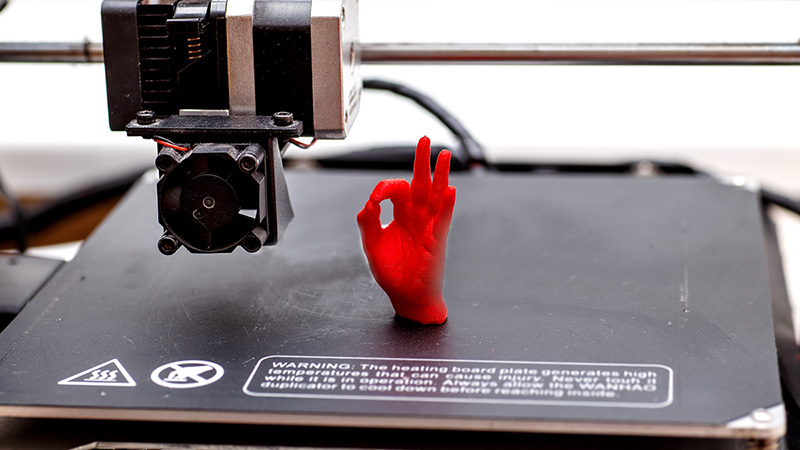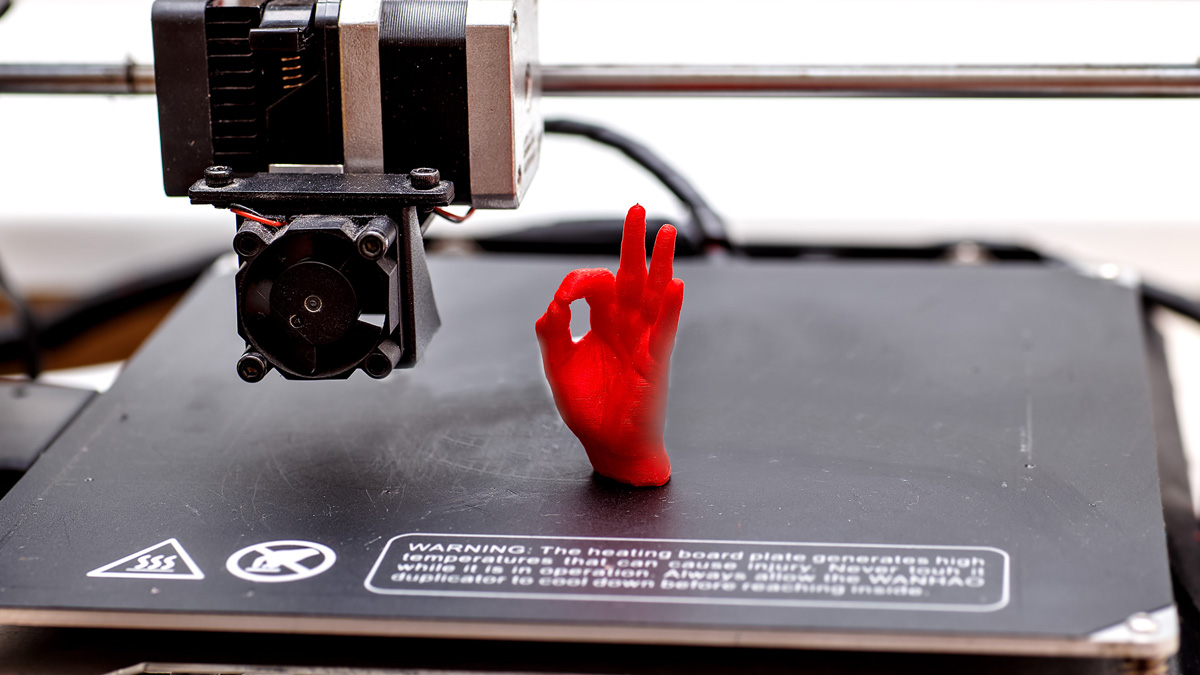The title of this post is true, whether we like it or not. I got the idea for this post when visiting Finnish jewellery manufacturer Kalevala Koru on an excursion with the Finnish Fashion Law Association. Kalevala Koru is an excellent example of a company combining traditional hand craftsmanship and 3D printing technology in its manufacturing processes. This visit reminded me of why I got so excited about 3D printing that I just had to write my master’s thesis about it, even though there weren’t many sources to refer to at the time.
3D Printing Set to Change Life as We Know It


Hilma-Karoliina Rozell
Related services
What makes 3D printing particularly fascinating is that it is a link in the continual chain of ground-breaking inventions inevitably replacing existing methods to the extent that we cannot even imagine life before the new technology. Can you imagine living without your smartphone?
What are we talking about exactly when we talk about ground-breaking inventions. Take, for example, one of the first drivers of global trade, spices. The spice trade developed, because it was thought that spices helped preserve food. The bottom fell out of that business when American Frederik Tudor invented a way to preserve natural ice and ship it around the globe in 1806. Frederik’s business had the rug pulled out from under it, in turn, when artificial ice and then refrigerators were invented. The story of ground-breaking inventions is an inevitable march of progress in which it is easier to look back than forward.

The Third Industrial Revolution is Already Here
3D printing is one of the keys to the third industrial revolution. The third industrial revolution means, among other things, that the reduction of overall labour costs, for example, due to automation, as well as the increase in the amount of education required of the labour force could shift some production from countries it was moved to due to mass production and low labour costs back to the countries it originally departed from.
What 3D printing makes possible is a unique way of combining the accuracy of digital methods, the repeatability of mass production and the individuality of hand craftsmanship that nearly completely eliminates the costs of customisation. The business of shipping, at least certain kinds of goods, could very well suffer the same fate a Tudor’ ice hauling business: shipping some kinds of products will be unnecessary, because they will be manufactured on site and on demand.
In addition to the technology developing and becoming more affordable, there is a third factor feeding into the rise of 3D printing: a strong personalisation trend of consumer goods. Making a personalised product using traditional manufacturing methods is very expensive, but the economies of scale provided by mass production are less significant with respect to 3D printing. The luxury of personalisation will be within the reach of an increasing number of people.
The benefits are not just limited to consumers. The automotive and aircraft industries are already making extensive use of 3D printing. For example, Airbus has set itself the goal of 3D printing an entire airplane in one piece by 2050. The potential benefits in the health care devices industry is huge, and 3D printing is already being used to manufacture hearing aids and various prostheses. The Robohand project has provided over 2oo people in Sudan with functional and affordable 3D printed prosthetics hands.
What does this ground-breaking development of 3D printing mean from the perspective of intellectual property rights?
3D Printing and IPRs
To holders of intellectual property rights, 3D printing may sound ominous, and it is clear that this new technology will not be without its problems. By taking the tangible and making it digital, 3D printing could, for example, cause the manufacturing industry to encounter the same types of copyright problems experienced by the music and film industries. For example, you could make a digital copy of a vase on your desk using a 3D scanner and then use that scan to print hundreds of exact copies of the vase. This means that the challenges of digital copyright will soon also apply to physical reality, and the management of rights to physical objects could become as difficult as the management of music rights has become due to digital technology and online piracy.
Who is the Infringer, Who is Liable?
From the perspective of copyright or design rights, it may be difficult to intervene even in extensive home printing if it doesn’t meet the criteria of commerciality that legislation sets for such an infringement. Another interesting question is who is committing the violation and how: is it the person scanning a protected product, the person uploading it onto the Internet, the person printing it or all of them together? What about who is liable for damage caused by a printed product, for example, to its end user.
Will legislation be able to keep up? For example, the basic concepts of copyright law, such as the exclusive right to reproduce copyright protected works, are technologically neutral by nature. Copyright was originally designed for an analogue world, and its concepts are struggling to keep up with rapid technological development and digitalisation. In fact, the current extensive definition of reproduction can lead to impractical and haphazard results. Indeed, as the physical and digital worlds increasingly begin to overlap, 3D printing is set to be a major focal point for the difficulties of reconciling technological neutrality and reproduction.
Will 3D Printing Actually Change Anything?
I believe that, above all, 3D printing will usher in a new way of understanding intellectual property rights. It will function as a reminder that not all objects can be protected by IPRs. In addition, 3D printing will force companies to develop new ways of thinking and to come up with new solutions and business models for physical objects, just as the music and film industries have had to do following the digitalisation of music and movies. 3D printing will not reduce the importance IPRs, but will perhaps offer us the opportunity to re-evaluate how IPRs work.
In the end, 3D printing is just one new technology for manufacturing digital and physical copies of objects that may be protected by IPRs. Rights holders will still need to be alert and adapt to new circumstances by taking a fresh look at their business models. It is great to see that this is already being done in Finland.
I also believe that new paradigms will have to be developed for consumer goods, unless rights holders want the get bogged down in the same kind of piracy wars as the music and film industries. The difference, of course, is that these past battles have spurred the development of a fairly extensive set of options that the holders of rights to physical objects can use to intervene in violations.
What should be clear, however, is the 3D printing and the digitalisation of the physical world will not reduce the need for companies to plan, maintain and defend their IPR portfolios and to take technological development into account in their contracts. I believe quite the opposite, in fact.









